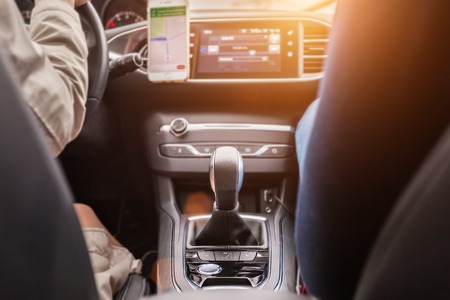Defining Luxury and Ultra-Luxury in the American Auto Market
Within the dynamic landscape of the U.S. automotive industry, the terms “luxury” and “ultra-luxury” have evolved far beyond mere price tags. Historically, luxury vehicles in America were synonymous with brands like Cadillac and Lincoln, which emphasized plush comfort, innovative technology, and a sense of exclusivity. However, as consumer expectations have shifted and global influences expanded, the definition of luxury has become increasingly nuanced. Today, luxury cars are expected to offer not just superior materials and advanced features, but also an elevated ownership experience that aligns with values such as sustainability, personalization, and connectivity. Ultra-luxury vehicles take this a step further by catering to an elite clientele who seek unparalleled craftsmanship, rare materials, and bespoke customization options—often blurring the line between automobile and art. As American consumers demand more than just status symbols, these categories continue to adapt, reflecting broader trends toward eco-conscious design and holistic well-being within the high-end auto market.
2. Key Features: Comfort, Technology, and Performance
When comparing luxury and ultra-luxury vehicles in the American high-end auto market, their distinct features truly set them apart. Both segments promise opulence, but the level of refinement, innovation, and personalized experience found in each is where the real difference lies. Let’s explore the hallmark attributes that define these two classes:
Advanced Technology Integration
Luxury cars typically come equipped with the latest infotainment systems, adaptive cruise control, and driver-assist technologies. Ultra-luxury vehicles take this further by introducing industry-first innovations like AI-powered interfaces, biometric security systems, and seamlessly integrated smart-home controls.
Bespoke Interiors & Materials
While both classes offer premium leather and high-quality trim, ultra-luxury interiors are often handcrafted and customizable to an almost limitless degree. Think rare woods, eco-conscious sustainable materials, hand-stitched detailing, and even precious metal inlays—all tailored to the owners precise specifications.
| Feature | Luxury | Ultra-Luxury |
|---|---|---|
| Seat Comfort | Heated/Ventilated Leather Seats | Massage Functions, Custom Stitching, Exotic Leathers |
| Infotainment Tech | Touchscreens, Premium Audio | Rear-Seat Entertainment Suites, Voice-Activated Controls, Immersive Sound Systems |
| Sustainability Focus | Eco-Friendly Options Available | Bespoke Sustainable Fabrics & Recycled Materials on Request |
| Customization Level | Limited Packages & Color Choices | Fully Bespoke Design—Paints, Embroidery, Monograms |
| Ride Quality | Smooth Air Suspension, Noise Insulation | Pioneering Active Suspension, Near-Silent Cabins with Advanced Acoustic Glass |
| Performance Engineering | Powerful Engines with Sport Modes | Hand-Built Powertrains, Hybrid/Electric Options for Quiet Power Delivery, Unmatched Acceleration & Handling Precision |
The Eco-Conscious Edge in High-End Autos
Sustainability is increasingly influencing both luxury and ultra-luxury segments. Many automakers now offer hybrid or all-electric options without compromising performance or comfort. In the ultra-luxury space, brands are leading the charge with exclusive green materials and next-generation battery technologies—proving that environmental responsibility can be synonymous with sophistication.

3. Brand Signals and Heritage
In the American high-end auto market, brand legacy plays a pivotal role in shaping perceptions of both luxury and ultra-luxury vehicles. Brand heritage—the story, history, and values behind a marque—contributes to a vehicle’s allure far beyond technical specifications or performance metrics. Luxury brands like Mercedes-Benz and Lexus are recognized for their longstanding commitment to craftsmanship and innovation, yet ultra-luxury brands such as Rolls-Royce, Bentley, and Bugatti elevate this with an even deeper sense of tradition, rarity, and artisanal attention to detail.
Exclusivity: More Than Just a Price Tag
For many American buyers, exclusivity signals not only financial achievement but also a certain cultural sophistication. Ultra-luxury brands amplify exclusivity by producing limited runs or bespoke models, often requiring prospective owners to undergo an invitation-only buying process or participate in private unveilings. This curated access helps transform ownership into an experience imbued with prestige—a social signal that goes beyond mere wealth.
Status Symbols in the American Context
Across the U.S., high-end vehicles serve as rolling status symbols, communicating success and taste within peer groups and communities. While luxury vehicles certainly project affluence, ultra-luxury cars function as cultural capital—they are recognized markers of elite circles where sustainability initiatives and green tech integration may be just as important as horsepower or hand-stitched interiors.
The Power of Cultural Capital
Ultimately, what distinguishes ultra-luxury from luxury in America is not just the badge or price point but the ability of these brands to create aspirational value. Through rich histories, exclusive ownership experiences, and evolving commitments to sustainability and social impact, ultra-luxury automakers offer more than transportation—they provide entry into a legacy of influence that continues to shape American aspirations and trends in green mobility.
4. Sustainability and Green Innovation
As America’s high-end auto market evolves, sustainability has become a defining factor distinguishing luxury from ultra-luxury brands. Both segments are embracing eco-friendly materials and cutting-edge green technologies, but their approaches and impact often differ in scale and ambition, reflecting the U.S. consumer shift toward environmental responsibility.
Eco-Friendly Materials: Setting New Standards
Today’s luxury vehicles are integrating recycled plastics, responsibly sourced wood trims, and vegan leather alternatives as standard features, signaling a commitment to minimizing environmental impact without sacrificing comfort or style. Ultra-luxury automakers elevate this trend with exclusive materials like lab-grown diamonds, reclaimed rare woods, and custom-developed bio-based textiles—often tailored for each customer.
Green Technologies: From Hybrid to All-Electric
The technology gap is also narrowing but remains significant. Luxury models now offer advanced hybrid systems and increasingly all-electric options, appealing to the eco-conscious American driver who values both performance and reduced emissions. Ultra-luxury brands push boundaries further with innovations like solid-state batteries, solar-integrated roofs, and AI-powered energy management systems designed for optimal efficiency and exclusivity.
Comparing Sustainable Features
| Feature | Luxury Segment | Ultra-Luxury Segment |
|---|---|---|
| Primary Material Use | Recycled plastics, vegan leather | Bespoke bio-materials, rare reclaimed woods |
| Main Powertrain Options | Hybrid & electric | All-electric, advanced battery tech |
| Green Tech Innovation | Regenerative braking, eco-driving modes | Solar roofs, AI energy optimization |
This collective drive toward sustainability not only enhances brand value but also aligns with the growing expectations of American consumers who seek vehicles that represent both status and stewardship of the planet. Ultimately, while both luxury and ultra-luxury cars are raising the bar on green innovation, ultra-luxury vehicles continue to set new benchmarks for what’s possible in environmentally conscious mobility.
5. Pricing Tiers and Ownership Experience
When it comes to the American high-end auto market, pricing tiers sharply differentiate luxury from ultra-luxury vehicles.
Price Points: Value vs. Exclusivity
Luxury cars—think Mercedes-Benz S-Class, BMW 7 Series, or Cadillac Escalade—typically start in the $70,000 to $150,000 range. Ultra-luxury vehicles like Rolls-Royce, Bentley, or Maybach often exceed $200,000 and can reach well into seven figures when customized. This price gap reflects not just enhanced materials or technology, but a leap into exclusivity and individualized craftsmanship.
Ownership Perks: Going Beyond the Basics
Standard luxury brands offer perks such as complimentary maintenance for several years, valet pickup and drop-off, roadside assistance, and access to exclusive brand events. Ultra-luxury ownership elevates these perks—owners may receive white-glove delivery to their home, invitations to private driving experiences in Napa Valley or the Hamptons, and even factory tours in Europe with personalized consultations.
Dealership Experiences: From Premium Lounges to Private Salons
The dealership experience also diverges significantly. Luxury dealerships feature premium lounges, professional product specialists, and fast-track service lanes. In contrast, ultra-luxury showrooms resemble art galleries or private clubs—appointments are private, sales consultants are often on-call around the clock, and clients might never set foot in the showroom at all, as vehicles are brought directly for at-home presentations.
After-Sale Services: Redefining Customer Care
After-sale support is another key differentiator. Luxury brands provide robust warranties and responsive service teams. Ultra-luxury automakers push this further: concierge services handle everything from routine maintenance scheduling to arranging cross-country transport or international storage for seasonal homes. The relationship is long-term and highly personalized, reflecting not only a commitment to sustainability but also an understanding of the unique needs of America’s most discerning drivers.
6. Future Trends: Customization, Digital Integration, and Conscious Consumerism
The high-end auto market in America is accelerating toward an exciting future defined by hyper-customization, seamless digital integration, and a growing focus on conscious consumerism.
Hyper-Customized Vehicles: Personal Expression Reimagined
As ultra-luxury buyers demand vehicles that truly reflect their unique lifestyles, automakers are offering unprecedented levels of personalization. From bespoke interiors crafted with rare, sustainable materials to custom exterior finishes and exclusive technology packages, the ultra-luxury experience is now all about individuality. American consumers increasingly view their vehicles as statements of identity, pushing brands to expand their customization programs far beyond traditional options.
Seamless Digital Experiences: The Connected Road Ahead
Digital innovation is rapidly transforming both luxury and ultra-luxury vehicles. Next-generation infotainment systems, AI-driven comfort settings, and intuitive connectivity features are becoming standard expectations for discerning buyers. In the U.S., where convenience and smart tech reign supreme, automakers are leveraging cutting-edge software to create immersive, integrated driving environments—from voice-activated controls to over-the-air updates that keep cars at the forefront of performance and security.
Responsible Luxury: Aligning with American Values
Perhaps the most significant shift is the rise of conscious consumerism among American luxury car buyers. Discerning customers now seek vehicles that not only offer status and comfort but also align with values like environmental stewardship and ethical sourcing. This has led brands to invest in green energy solutions, eco-friendly manufacturing processes, and transparent supply chains—making responsibility a new hallmark of true luxury. As the lines between luxury and ultra-luxury continue to blur, the future will belong to those brands that can deliver personalized, tech-forward experiences while respecting our planet and communities.

